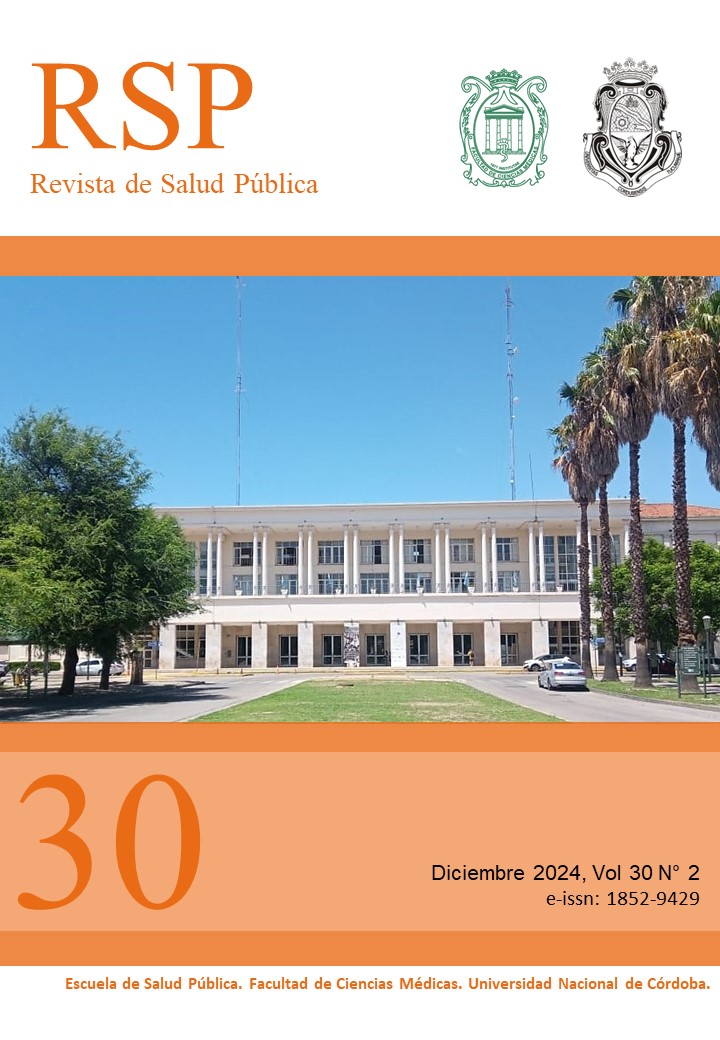Quality of Care in Liver Transplantation: Experience from a High-Volume Public Center in Argentina
DOI:
https://doi.org/10.31052/1853.1180.v30.n2.44354Keywords:
healthcare quality indicators, healthcare quality, liver transplantAbstract
Introduction: Health policies aimed at improving public health have often focused exclusively on access to basic health services, sometimes at the expense of the quality of care. Assessing care quality in liver transplantation is essential to control and meet healthcare needs. The objective of this study is to examine patient satisfaction regarding care during post-liver transplant hospitalization phase.
Methodology: We conducted a prospective, descriptive, and observational study using a questionnaire to assess satisfaction of liver transplant patients. An individual, anonymous, semi-structured, and self-administered survey was employed, evaluating patient satisfaction across five areas: staff care, hospital organization, inpatient facilities, quality of services provided, and respect for privacy, confidentiality, and care continuity. The survey included affirmative statements with Likert-type responses.
Results: We analyzed 79 responses from 86 transplanted patients (response rate: 91.86%). Just over half of the sample were men (45; 56.96%), with an average age of 48.61 ± 11.61 years (range: 24-69). A total of 81.01% received care quality exceeding their expectations. Moreover, 72.15% reported better health than upon hospital admission, and nearly all participants (98.74%, 78) reported satisfaction with the care received during this period.
Conclusion: Our findings indicate a high level of satisfaction regarding care received post-liver transplantation.
Downloads
References
Torres Samuel M, Vásquez Stanescu C, Luna Cardozo M. Análisis estratégico de la evaluación de la calidad del servicio en el sector público. Compendium. 2011;14(27):39-59.
Minazzato L, Amodio P, Cillo U, Zanus G, Schiff S, Bombonato G, et al. Subjective satisfaction and quality of life in patients prior to listing for liver transplantation. Int J Artif Organs. 2009;32(1):39-42.
Busse R, Panteli D, Quentin W. An introduction to healthcare quality: defining and explaining its role in health systems. Euro Obs H Sys. 2019;16(2):44-62.
Vrijhoef HJ, Berbee R, Wagner EH, Steuten LM. Quality of integrated chronic care measured by patient survey: identification, selection and application of most appropriate instruments. Health Expect. 2009 Dec;12(4):417-29.
Forsberg A, Bäckman L, Möller A. Experiencing liver transplantation: a phenomenological approach. J Adv Nurs. 2000; 32:327.
Zeithaml VA. Perspectives in Consumer Behavior. 1st ed. Upper Saddle River, NJ: Prentice Hall, Inc; 1991.
Stiavetti E, Matteucci R, Giannessi E, Ducci J, Baldoni L, De Simone P, et al. Patient satisfaction among liver transplant recipients: single-center survey. Transplant Proc. 2010 Jul-Aug;42(6):2233-7.
Cao C, Halegoua-DeMarzio D, Guirguis S, Chen C, Fenkel JM, Herrine S. Employment and Patient Satisfaction after Liver Transplantation. J Clin Transl Hepatol. 2020 Sep 28;8(3):299-303.
Herrero JI. III Consensus Meeting of the Spanish Society of Liver Transplantation. Hepatitis C, living-donor liver transplantation, quality of liver grafts and of liver transplantation programs. Gastroenterol Hepatol. 2011; 34(9):641-59.
Barrio VV, Renedo CF, Palacios EG. Calidad de vida del receptor de un órgano sólido en Castilla y León. Revista ROL de enfermería. 2021;44(5):12-20.
Mainardi V, Menéndez J, Valverde M, San Martín G, Prieto J, Noceti O, et al. Resultados del Programa Nacional de Trasplante Hepático del Uruguay a 10 años de su inicio. Rev. Méd. Urug. 2020;36(4):341-53.
Ley 23.660 de Obras Sociales. Sistema nacional del seguro de salud de Argentina. [Internet]. [Consultado 13 May 2024]. Disponible en: http://www.saij.gob.ar/
Ley 26.682 de Medicina Prepaga de Argentina. [Internet]. [Consultado 13 May 2024]. Disponible en: https://www.argentina.gob.ar/.
Muller X, Marcon F, Sapisochin G, Marquez M, Dondero F, Rayar M, et al. Defining Benchmarks in Liver Transplantation: A Multicenter Outcome Analysis Determining Best Achievable Results. Ann Surg. 2018 Mar;267(3):419-425.
INCUCAI. RESOL-2022-82-APN-D#INCUCAI. [Internet]. [Consultado 13 May 2024]. Disponible en: https://www.argentina.gob.ar/.
K.T. Kirchhoff, N. Dahl. American Association Of Critical-Care Nurses’ National Survey of Facilities and Units Providing Critical Care. Am J Cr Care. 2006;15(1):13-28.
Schwanda M, Gruber R. Extended visitation policy may lower risk for delirium in the intensive care unit. Evid Based Nurs. 2018 Jul;21(3):80.
Downloads
Published
Issue
Section
License
Copyright (c) 2024 Escuela de Salud Pública y Ambiente. Facultad de Ciencias Médicas. Universidad Nacional de Córdoba

This work is licensed under a Creative Commons Attribution-NonCommercial 4.0 International License.
Authors who publish with this journal agree to the following terms:
- Authors retain copyright and grant the journal right of first publication with the work simultaneously licensed under a Creative Commons Attribution License which allows the work to be copied, distributed, exhibited and interpreted as long as it is not done for commercial purposes.
- Authors are able to enter into separate, additional contractual arrangements for the non-exclusive distribution of the journal's published version of the work (e.g., post it to an institutional repository or publish it in a book), with an acknowledgement of its initial publication in this journal.
- Authors are permitted and encouraged to post their work online (e.g., in institutional repositories or on their website) after the publication process. (See The Effect of Open Access). (See The Effect of Open Access).







